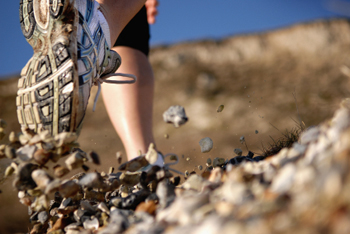Shoe Care

• Leather Shoes
Use leather shoe cleaner and a quality brush to remove loose surface dirt. If they are wet after cleaning, let them air dry.
• Suede Shoes
Preventitive maintenance is a must for suede shoes. Apply a water/stain repellent before you wear for the first time. Clean your shoes with leather shampoo or cleaning foam. Make sure the product says it’s safe for suede! Try the cleaner on a small, hidden part of the shoe to make sure it doesn’t discolor your shoes. Buy a brush made for suede/nubuck and use to remove loose surface dirt. If they are wet after cleaning, let them air dry. For tough stains, buy a ‘suede eraser’. (quick tip: you can also rub the suede shoes against each other to remove scuffs!).
• Synthetic Leather Shoes
Clean your shoes with a mild leather shampoo or cleaning foam. Use a quality brush to remove loose surface dirt.
• Fabric or Canvas Shoes
Clean shoes by hand with mild soap and water.
• Water proofing
For most shoes, you can waterproof them using a spray formulated for the material your shoes are made of. For suede/nubuck shoes, waterproofing is especially important. Before wearing them for the first time, treat them with a water and stain repellent spray. Repeat over time when needed.
• Waterlogged Shoes
If your shoes get soaked whether from rain, sweat or puddles make sure to dry them properly immediately afterward. Remove the insoles and then stuff the shoes with newspaper and put them in a well-ventilated area away from heat sources and let them dry overnight. (replace the newspaper for extra wet shoes if needed).
• Extend the Life of Your Athletic Shoes
Don’t store shoes in cold areas (like an unheated garage or porch) during the winter or in direct sunlight during the summer. And wear shoes for the sport they are made for – don’t wear running shoes for tennis, soccer or basketball. After running in wet weather, be sure to dry your running shoes (including the insoles) thoroughly, but don’t dry them in a dryer.
• When to Replace Shoes
It’s difficult to give an exact mileage guide., but tips include (1) touch the midsole to see if it feels brittle or compressed; (2) do a visual check for imbalances, such as worn areas or tilting to one side or the other; (3) listen to your body – those aches and pains may mean it’s time for a new pair of shoes. Also, midsoles usually deteriorate before outsoles. Our shoes may look fine, but if the midsoles are worn, it’s time for a new pair.
